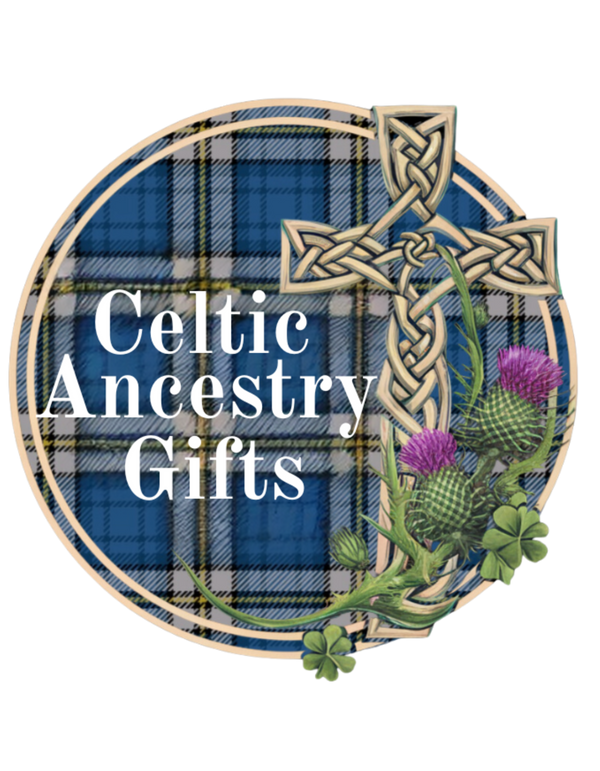
Unraveling the Tapestry of Clan Calder: History, Connections, and Enduring Legacy
Share
A Deep Dive into the History and Intricate Connections of Clan Calder
Clan Calder, while perhaps less prominent in popular imagination than some of Scotland's larger and more widely documented clans, possesses a rich and complex history inextricably linked to the dramatic tapestry of Scottish life. This comprehensive exploration delves into the origins, key figures, significant historical events, and the intricate network of connections that shaped the Clan Calder legacy, offering a detailed and nuanced understanding of their enduring contribution to Scottish history. Unlike some clans with readily available historical records, piecing together the Calder story requires diligent research across diverse sources, revealing a fascinating narrative of adaptation, resilience, and enduring family bonds.
Tracing the Roots: Origins and Early History of Clan Calder
Pinpointing the precise origins of Clan Calder presents a challenge, given the limitations of early Scottish genealogical records. However, the clan's name itself, 'Calder,' is strongly linked to the River Calder in Midlothian, Scotland. This geographic connection suggests that the clan's early members were likely rooted in the fertile lands surrounding the river, deeply involved in the agricultural practices that sustained life in the region. Their early existence was likely characterized by close-knit communities, with strong familial and societal bonds.
Evidence suggests a gradual expansion of the Calder clan’s influence within Midlothian. This process, spanning centuries, would have involved a combination of factors: population growth, strategic marriages solidifying alliances with neighboring families, and shrewd land acquisitions that cemented their presence within the community. Such expansion wouldn’t have been without challenges; land disputes, competition for resources, and the ever-present threat of conflict would have shaped their early history, demanding resourcefulness and adaptation from the clan members.
We can glimpse their early lives through scattered mentions in historical records, land ownership documents, and place names associated with the Calder family across Midlothian. These fragments of information offer tantalizing clues, painting a picture of a slowly growing clan, participating in the daily life of the region, contributing to the social and economic fabric of medieval Scotland. The absence of detailed written records only enhances the intrigue, highlighting the need for interdisciplinary approaches to fully understanding their history.
Key Figures and Defining Moments in Clan Calder History
While extensive biographical details on specific Calder figures are scarce, names repeatedly appear in various historical accounts, indicating their prominence within the clan. These individuals likely held key positions within the community; they might have been influential in local governance, skilled warriors who played significant roles in conflicts, or adept land managers who ensured the clan's prosperity. However, detailed accounts of their lives often remain elusive, forcing researchers to rely on fragmented evidence and inference.
The influence of significant historical events on Clan Calder also necessitates further exploration. Periods of upheaval, such as the Wars of Scottish Independence and the Jacobite risings, undoubtedly impacted the clan. Their geographic location in Midlothian placed them near the heart of many major conflicts; however, ascertaining their specific involvement and allegiances requires careful analysis of military records, land ownership shifts, and any surviving correspondence. Did they actively participate in the battles? Did they remain neutral? Such questions remain to be answered through meticulous investigation.
Furthermore, the exploration of less dramatic aspects of their history, such as their daily lives, social structures, economic activities, and cultural practices, will provide a more complete picture of Clan Calder. Understanding their contributions to agriculture, crafts, and trade will give depth to their societal impact. Reconstructing their social hierarchy, kinship systems, and traditions offers a valuable perspective on the internal dynamics of the clan, shaping our comprehension of their enduring presence.
Exploring Clan Connections: A Network of Alliances and Relationships
Understanding Clan Calder necessitates examining their interactions with other clans and families throughout Scotland. These relationships—formed through intermarriage, strategic alliances, and shared interests—offer significant insight into the social and political landscape of their time. Research hints at potential links to several prominent clans in the region, but determining the precise nature and extent of these connections requires dedicated genealogical research and a thorough analysis of historical records.
Intermarriage, for instance, played a significant role in expanding the clan’s influence and forging alliances. By marrying into other influential families, the Calders could solidify their position, gain access to resources, and extend their network of support. These marital unions also provide valuable pathways for understanding the broader social dynamics and power structures of the time. Analyzing marriage patterns, inheritance laws, and family lineages helps to illuminate the complex web of relationships that characterized Scottish society.
Moreover, the study of conflicts and alliances offers further clues to Clan Calder's history. Did they participate in feuds or larger-scale wars alongside other clans? Did they forge defensive alliances to protect their interests and territory? The answers to these questions would give us a deeper understanding of their strategy, tactics, and their place in the larger Scottish clan system. Careful examination of surviving documents, including land records, legal documents, and historical chronicles will help to unravel these complexities.
Clan Calder in the Modern Era: Preserving Heritage and Forging Connections
In the 21st century, the legacy of Clan Calder continues through various societies and organizations devoted to preserving its heritage and uniting its descendants. These dedicated groups play a critical role in carrying the torch of history forward. They actively engage in genealogical research, meticulously collecting and preserving family records; they conduct historical investigations, expanding our knowledge of the clan; and they foster a strong sense of community among Calder descendants worldwide.
These organizations facilitate connections between individuals who may share a common ancestry but are geographically dispersed. They provide a platform for individuals to share stories, build relationships, and contribute to a collective understanding of their heritage. The efforts of these societies highlight the enduring importance of clan identity and the power of shared history in forging a sense of belonging. The preservation of family histories, photographs, and traditions is crucial to keeping the memory of Clan Calder alive and vibrant.
Moreover, these modern efforts extend beyond simple record-keeping. They frequently collaborate with museums, libraries, and historical societies, contributing valuable research and artifacts to the broader understanding of Scottish history. Their work not only preserves the Calder legacy but also enriches our understanding of Scotland's cultural and social history, providing insights into the lives and experiences of ordinary people in extraordinary times.
Further Research and Avenues for Exploration
The exploration of Clan Calder's history, as presented here, serves as a starting point; much remains to be uncovered. Further research utilizing various resources—local parish records, land deeds, national archives, genealogical databases, and oral histories—is crucial in filling the gaps in our knowledge. Collaboration between researchers, historians, clan societies, and individuals with family connections is essential for a more comprehensive understanding.
Specifically, deeper investigation is needed into the clan’s economic activities, examining their involvement in agriculture, trade, and other economic endeavors. Tracing their migration patterns over time, and exploring their geographic reach, provides further context. Analyzing their relationship with the broader political landscape of Scotland, considering their allegiance and involvement in significant historical events, will give us a more nuanced view of their history. Exploring their cultural contributions – music, art, literature – offers a vital insight into the lives and experiences of the Calder people.
The ongoing quest to unravel the tapestry of Clan Calder’s history is a journey of discovery, a testament to the human spirit’s drive to understand its past. This ongoing work not only illuminates the rich and complex history of a specific clan but also provides a lens through which to examine the larger historical and social forces that have shaped Scotland over the centuries. The story of Clan Calder is ultimately a reflection of Scotland itself; a story of resilience, adaptation, and enduring connections across generations. The work of continued research will help ensure that this vital chapter in Scottish history is not only remembered but also celebrated and understood in all its complexity.
Exploring Key Branches and Related Families of Clan Calder
- The Calder Family of Lothian: Detailed research into this branch will provide essential insights into the origins and early development of the clan.
- Calder Connections to Other Clans: A systematic examination of alliances and rivalries, including specific dates and events of interaction with clans such as the MacGregors, Campbells, and others.
- Migration Patterns: Tracing the movement of Calder families throughout Scotland and beyond, using maps and historical records to illustrate their expansion.
- Genealogical Research: Collaboration between researchers, historians, and genealogists is needed to thoroughly map the clan’s family trees and identify key figures.
- Oral Histories and Traditions: Careful documentation of oral histories and family traditions from descendants of Clan Calder, capturing unique insights and perspectives.
- Economic Activities: Investigating the clan’s involvement in agriculture, trade, crafts, and other economic endeavors, revealing their contributions to the regional economy.
- Cultural Contributions: Uncovering evidence of the clan’s contributions to art, literature, music, and other forms of cultural expression.
- Military History: A detailed exploration of their participation in specific conflicts, including the Wars of Scottish Independence and the Jacobite risings, revealing their role and allegiances.
The continuing study of Clan Calder's legacy offers significant opportunities for uncovering further details about their story and its impact on Scottish history. This exploration is not just an academic endeavor; it's a vital contribution to the preservation of Scotland’s cultural heritage and a testament to the resilience and enduring spirit of the Clan Calder across the centuries.

